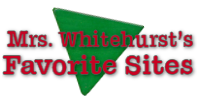We finished up glued sounds when we got back from break.
ing, ang, ong, ung
ink, ank, onk, unk
These were hard for the student but now they are reading them as chunks instead of sounding them out. Examples: thing, hang, junk, dunks, song, sang, lung, king, bank, links
After that unit we began blends which are two consonants side by side.
sc, sk, sl, sm, sn, sp, st, sw
bl, cl, fl, gl, pl, sl
br, cr, dr, fr, gr, pr, tr
We also learned about digraph blends which was a consonant and a digraph side by side, such as bunch. The n and the ch are the digraph blend.
Last week we introduced closed syllables which is actually all the words we have learned so far now we just call them closed syllables. A closed syllable has a consonant that closes the door on the vowel and makes the vowel say its short vowel sounds. We mark the short vowel with a breve (the smile) and we syllable swoop the syllable.
Here are a few examples on how we mark the words. We start with marking because it is concrete and visual for the children and slowly they don’t need to mark it to see the phonics patterns anymore.
Fang has a glued sound and we box the glue sounds. These are all the glued sounds we know, all, an,am, ing, ang, ong, ung, ink, ank, onk, unk
Rings has a suffix s we underline the base words and circle the suffix s.
Crash has a blend which we underline the c and the r separate to show they still say their own sound and the digraph ch gets one line because a new sound is made.
Lunch has a digraph blend where we underline the n and and the ch.
Skips has a blend and a suffix s.
The next 4 words are how we mark a closed syllable word. The breve is over the short vowel and the syllable is swooped.
If you have any questions about phonics let me know. I use to teach it in small group but we have made some changes to our reading block. I now teach it whole group at our desks. We do a dictation almost everyday on our white boards which includes 3 sounds, 3 words, and a sentence. For example: all, ch, ing, hangs, chips, bunch, Jeff could walk past the red ball.

















